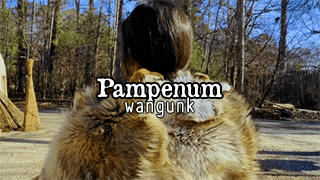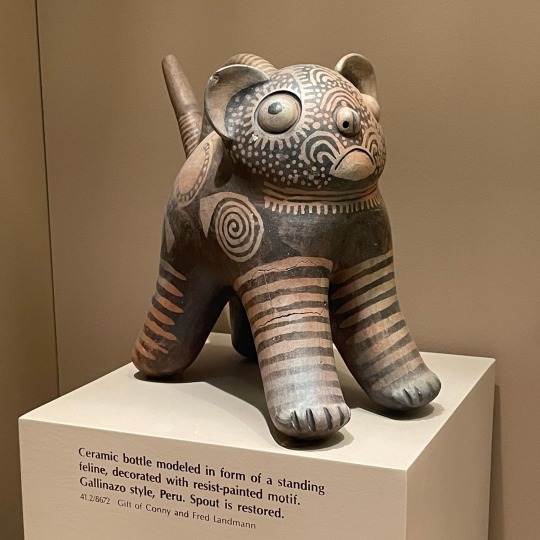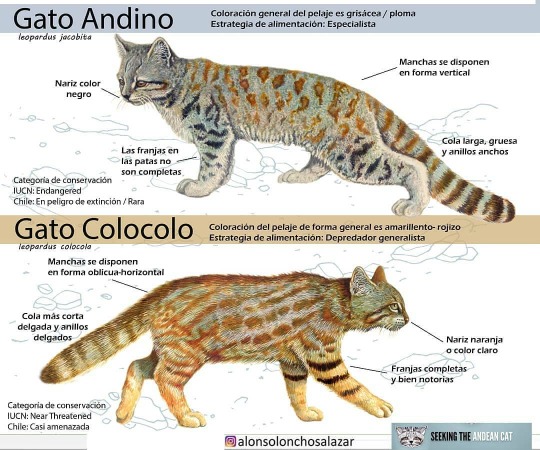#Indigenous American history
Text
I’ve just learned of a whole new act of genocide against the Navajo people during the Great Depression from this book I’m reading, “A Short History of the World According To Sheep”.
Around half a century after the majority of the Navajo had originally been forced off their land, with millions dying in a forced trek known as “the Long Walk”, and then *finally* allowed to return, the US Government basically declared “they were keeping too many sheep on their land” (which they were *not*; the Navajo bred a stunning variant of the churro sheep breed despite mass slaughter of their animals at the time of the original 19th century genocidal acts, and their husbandry of the land and their animals was reportedly superb, despite it being pretty arid even then) and, despite ongoing legal challenges, enacted a mass slaughter of these churro herds that had been revived with such love, not to mention 10,000 horses.
This destroyed the economy in the area, left the people on the brink of starvation, and broke the hearts of the Navajo.
The Navajo churro breed of sheep was on the edge of extinction until the 1970s. There are apparently still giant heaps of sheep and horse bones lying in ravines where these poor creatures were slaughtered by federal agents. The Navajo still sing mourning songs about it and all the human deaths that followed.
I’ve never even heard of this before. Not even a whisper of it.
The pointless brutality of doing that during a global economic disaster seems cartoonishly evil. And yet, of course, we know that the cruelty was the *point*.
There have been so many acts of genocide against indigenous Americans that something like this as recently as the 1920s can literally disappear. And now, of course, they are threatened just as fatally, if less directly, by climate change threatening to make the Navajo lands uninhabitable.
I cant help drawing comparisons with the IDF burning Palestinian olive groves. Wanton, pointless destruction of the living beings a culture reveres, nurtures, husbands and depends on is not one of the better-known acts of genocide, but it is both materially and spiritually a very real one.
#indigenous people#indigenous rights#navajo#navajo people#cw mass animal death#navajo churro sheep#sheep#cw genocide#palestine#palestinian olive trees#modern history#indigenous american history
124 notes
·
View notes
Photo

Ma-ah-go-quah, wife of John Big Fout (or Big Foot), of the Potawatomi Tribe, on July 16, 1923.
Record Group 75: Records of the Bureau of Indian Affairs
Series: Photographs
Image description: An elderly woman seated in a chair in front of an exterior wall. She is wearing a blouse with a long ruffle around the neck, a floral skirt, and a wide fabric headband. She has a blanket partially pulled over her lap. Her hands are clasped in her lap.
#archivesgov#July 16#1923#1920s#portrait#Native American history#American Indian history#Indigenous American history#Potawatomi
163 notes
·
View notes
Text
Decolonization of history tends to cut both ways and the truly excellent works in it do that, and this is one of them:
This book is one of the more important and the more ironic examples of decolonization of history and knowledge in a way that would brutally disillusion people who prefer their Indigenous peoples saintly Eldar who leave no impact and pass over the world like a leaf upon the wind and then meet the same fate as the fictional character who uttered those words.
In particular it notes that the Comanche Empire or Comancheria was a gunpowder steppe empire of the kind that Central Asian history is full of. The Turkic Khaganate, the Chanyus of the Xiongnu, Genghis Khan and his Mongol Empire, Tamerlane, and the Durrani Empire would all be classic examples of these patterns. States that arise swiftly and fall equally swiftly with catastrophic impacts on the sedentary populations around them.
Other cultures also tried it and the Lakota in the north were the closest within US boundaries as history would evolve to match the Comancheria but even then it was a distant cousin. None of the warlords of the Numunuu people who conquered their way through parts of Spanish and then Mexican and then Anglo-America would have understood the greater irony that they hollowed out northern New Spain and then Mexico and greased the path of the United States to impose its own imperial vision atop their own.
Batu Khan wouldn't have understood that the longer-term impact of his conquest of a bunch of disorganized principalities on the Volga would be the emergence of three nations and a grand and terrible empire that would exact vengeance in the 'If Cain sevenfold, Lamech seventy-sevenfold' sense any more but that's how history wound up working in both cases. When the Comancheria did collide with the full weight of US geopolitical power in the wake of the War of the Rebellion it was up against a proto-superpower in the wake of a brief resurgence and ultimately vastly outmached.....much as fellow steppe empires in Central Asia were falling to Russian arms at that time.
The most important factor of this book is that it re-establishes the Indigenous peoples of this part of the world as key drivers of its history, and in this one case as rulers of an empire that brought devastation and slave-trading on a scale unmatched by any other nation of its time.....and that very habit was precisely one of the factors that contributed to the ease of the 1870s United States justifying dropping the hammer on it. A society that had spent five years breaking the old slave power system and which was then in the midst of Reconstruction had the most gift-wrapped excuse for conquest it would ever have......and then proceeded into the usual shabby bloodthirsty barbarism of the standard Indian War cycle and exercised the victor's privilege of blithely amplifying the brutality of Comanche raids detached from the actual geopolitical logic behind them, all the better to make their own empire seem more just than it was.
10/10.
2 notes
·
View notes
Text
hey Amrev and adjacent fandoms, is there any good media about The French And Indian War (do we have a better name for it yet) or is it just Too Depressing and too Full Of War Crimes for people to want to spin narratives that examine the human condition out of? James Fenimoore Cooper cannot have been the only person in 200 years that hyperfixated on this.
#amrev#18th century#18th century media#history#american history#US history#indigenous american history#literature
5 notes
·
View notes
Text
"At one Cherokee town in South Carolina, the army destroyed six thousand bushels of corn and the South Carolina government paid this army a bounty for Cherokee scalps. This full-scale assault effectively ended Cherokee participation in the Revolutionary War, and in 1777 the Cherokees ceded most of their South Carolina land."
#american revolution#indigenous american history#cherokee history#south carolina history#no scalp money this time rollins indeed#the patriot
2 notes
·
View notes
Text

This is the kind of free thinking Fascists want to crush.
#history#native american#indigenous#antiauthoritarian#antinazi#anti capitalism#earth#america#australia#australian#amerika#americans#class war#classwar#ausgov#politas#auspol#tasgov#taspol#neoliberal capitalism#fuck neoliberals#anthony albanese#albanese government#antifascist#antifaschistische aktion#anti imperialism#anticapitalista#anti capitalist love notes#eat the rich#anarchy
8K notes
·
View notes
Text
Tribal Names
I don’t think many people, even some native people, are aware that the legal names of many tribes are actually not from the tribe.
Often the names came about because colonizers would ask one tribe "hey, what do you call those people over there?". then they would assign the name given to that tribe. so often the names were descriptions from unrelated tribes, or in more extreme cases, insults.
The Muscogee tribe got pretty lucky since the legal name was "creek" and it came from a different tribe going "oh, those are the people near the creek". which, is accurate enough, most creek settlements were placed along creeks. a famous one that is related to the Muscogee is the name "Cherokee". "Cherokee" is a Muscogee word meaning something along the lines of "people who don’t speak our language". Even this is pretty light compared to some names. some official tribal names translate to phrases like "dog eaters" or "lazy people".
This is why it’s not uncommon for tribes to start using older names. Muscogee comes from the term for our people "Mvskoke", and the tribe has made efforts to distance itself from the name "Creek". Although it is likely still the name you’ll hear most often.
#muscogee#mvskoke#native blogs#native american#indigenous blog#indigenous#native girls#indigenous history#muskogee#cherokee#oklahoma#native americans#tribal names#tribes#north american history#creek tribe
2K notes
·
View notes
Text

"In 2023, Native American children are still forced to cut their hair. A school in Kansas forced an 8 year old Native child to cut his hair because it didn't fit the requirement for boys. Despite being protected by the First Amendment of Freedom of Expression and Religion."
I remember the story of a young Black teen who was told if he didn't cut off his locks before a wrestling match he could not participate. There was footage of him looking despaired while they cut off his hair. Or another time when another Black teen who was told if he didn't cut his dreadlocks he couldn't attend his own graduation ceremony -he was suspended just like so many have been for refusing to cut their hair. I'm also thinking of the countless times Black girls and women, who have disproportionately experienced hair bias, been told their hair isn't 'professional,' if it hasn't been straightened.
Telling Indigenous people to cut their hair has white supremacist roots (as it does for the cases I just mentioned above) -settler-colonizers did this when they kidnapped and forced Indigenous children into these genocidal concentration camps (yes, that's what they were) and it's beyond despicable. And is something that is a political issue because hair is political -for so many cultures and traditions, it is sacred -this is just horrifying.
#feminist#feminism#social justice#indigenous history#indigenous solidarity#current events#colonialism#colonial violence#intersectionality#native american#fuck colonialism#fuck colonizers#hairbias
826 notes
·
View notes
Text
If you are talking about the human tragedy and climate disaster impacting Hawai’i ONLY in relation to tourism or your (postponed) vacation plans . . . therein lies the problem.
Hawai'i is not an "eat, pray, love" trip nor is she a cultural theme park.
Hawai’i is a collection of communities with deep indigenous roots and ancestral identities (many queer + colorful) that American + European colonizers once attempted to eradicate.
In the present day, empire-builders and colorblind colonizers are attempting to gentrify and commodify these ancestral spaces, not to benefit the indigenous, diaspora, and immigrant folks (folx) who steward and preserve those waterways and lands, but to protect the interests and properties of billionaires on vacation
Afronaut Note: This is not a discussion about policing language or shaming folks in your neighborhood who are sharing vacation pictures or lamenting their travel plans. This is about expanding our horizons to center decolonized, ancestral, and communal spaces. Imagine if after the Japanese tsunami (2011) or Hurricane Katrina (2005), people shared vacation pictures and complained about having to cancel their graduation trips.
Original post from @seedingsovereignty
——
"Our culture has to be the core of our mana." Dr. Haunani-Kay Trask (1949 – 2021)
A leader of the Hawaiian sovereignty movement & a fearless leader.
Her memory is needed during these times.
Support the People of Hawai’i
#we are not americans#indigenous rights#Flowers for Hawai’i#our world#ecosystem of white supremacy#slow growth activism#our history is your history
1K notes
·
View notes
Text








Historical Indigenous Women & Figures [6]:
Queen Nanny: the leader of the 18th century Maroon community in Jamaica, she led multiple battles in guerrilla war against the British, which included freeing slaves, and raiding plantations, and then later founding the community Nanny Town. There are multiple accounts of Queen Nanny's origins, one claiming that she was of the Akan people from Ghana and escaped slavery before starting rebellions, and others that she was a free person and moved to the Blue Mountains with a community of Taino. Regardless, Queen Nanny solidified her influence among the Indigenous People of Jamaica, and is featured on a Jamaican bank note.
Karimeh Abboud: Born in Bethlehem, Palestine, Karimeh Abboud became interested in photography in 1913 after recieving a camera for her 17th birthday from her Father. Her prestige in professional photography rapidly grew and became high demand, being described as one of the "first female photographers of the Arab World", and in 1924 she described herself as "the only National Photographer".
Georgia Harris: Born to a family of traditional Catawba potters, Harris took up pottery herself, and is credited with preserving traditional Catawba pottery methods due to refusing to use more tourist friendly forms in her work, despite the traditional method being much more labour intensive. Harris spent the rest of her life preserving and passing on the traditional ways of pottery, and was a recipient of a 1997 National Heritage Fellowship awarded by the National Endowment for the Arts, which is the highest honor in the folk and traditional arts in the United States.
Nozugum: known as a folk hero of the Uyghur people, Nozugum was a historical figure in 19th century Kashgar, who joined an uprising and killed her captor before running away. While she was eventually killed after escaping, her story remains a treasured one amongst the Uyghur.
Pampenum: a Sachem of the Wangunk people in what is now called Pennsylvania, Pampenum gained ownership of her mother's land, who had previously intended to sell it to settlers. Not sharing the same plans as her mother, Pampenum attempted to keep these lands in Native control by using the colonial court system to her advantage, including forbidding her descendants from selling the land, and naming the wife of the Mohegan sachem Mahomet I as her heir. Despite that these lands were later sold, Pampenum's efforts did not go unnoticed.
Christine Quintasket: also known as "Humishima", "Mourning Dove", Quintasket was a Sylix author who is credited as being one of the first female Native American authors to write a novel featuring a female protagonist. She used her Sylix name, Humishima, as a pen name, and was inspired to become an author after reading a racist portrayal of Native Americans, & wished to refute this derogatory portrayal. Later in life, she also became active in politics, and helped her tribe to gain money that was owed them.
Rita Pitka Blumenstein: an Alaskan Yup'ik woman who's healing career started at four years old, as she was trained in traditional healing by her grandmother, and then later she became the first certified traditional doctor in Alaska and worked for the Alaska Native Tribal Health Consortium. She later passed on her knowledge to her own daughters. February 17th is known as Rita Pitka Blumenstein day in Alaska, and in 2009 she was one of 50 women inducted into the inaugural class of the Alaska Women's Hall of Fame
Olivia Ward Bush-Banks: a mixed race woman of African American and Montaukett heritage, Banks was a well known author who was a regular contributor to the the first magazine that covered Black American culture, and wrote a column for a New York publication. She wrote of both Native American, and Black American topics and issues, and helped sculptor Richmond Barthé and writer Langston Hughes get their starts during the Harlem Renaissance. She is also credited with preserving Montaukett language and folklore due to her writing in her early career.
part [1], [2], [3], [4], [5] Transphobes & any other bigots need not reblog and are not welcome on my posts.
286 notes
·
View notes
Photo

Cliff Palace, the Ancestral Pueblo cliff dwellings at Mesa Verde, photographed on July 27, 1923.
Record Group 95: Records of the Forest Service
Series: Photographs Relating to National Forests, Resource Management Practices, Personnel, and Cultural and Economic History
Image description: We can see a couple dozen of the sandstone-and-mortar rooms that make up the Cliff Palace site. The rooms mostly have sharp corners, but a few are round. They are built under an overhanging cliff.
#archivesgov#July 27#1923#1920s#Cliff Palace#Mesa Verde#mesa verde national park#Ancestral Pueblo#Native American history#American Indian history#Indigenous American history#or prehistory I suppose#archaeology#Colorado
129 notes
·
View notes
Text
This book does illustrate one of the more interesting blind spots in more progressive histories:
There is one not at all slight irony that in discussion of ethnogenesis among Indigenous nations there's still old-fashioned essentialism in the Victorian sense, where these histories of Asian and European nations, OTOH, fully apply the 'imagined community' thesis. This is especially jarring in a work that tries to blend the different aspects of both decolonizing history and establishing that there were, in fact, a mercantile-nomadic nation called Jumanos.
It's also a testament to the sheer destructive impact of Spanish Imperialism that entire cultures had their existence debated by European and Euro-American scholars, because the devastation was that total. The book both makes a good case and is a good look at aspects of history in New Spanish Texas and New Mexico.
9/10.
1 note
·
View note
Text
For #Caturday:

Ceramic bottle modeled in the form of a standing feline, decorated with resist-painted motif.
Gallinazo style (aka Virú culture), NW Peru, Early Intermediate Period, c. 200 BCE - 600 CE.
Spotted at the American Museum of Natural History NYC.
PS: this vessel may depict the Peruvian subspecies of Pampas Cat aka Northern Colocolo (Leopardus colocola garleppi). The Andean Mountain Cat (Leopardus jacobita) is also often suggested, but their range is more southern and higher elevation than where the Virú were? Also note the stripier legs on the Colocolo similar to the ceramic:

#cat#cats in art#feline#ceramics#effigy vessel#pre-conquest#Peruvian att#South American art#Indigenous art#Gallinazo#Virú#American Museum of Natural History#museum visit#Caturday#animals in art#Pampas Cat#Colocolo#Andean Mountain Cat#wild cats#mammalogy#zoology#species ID#ID#infographic#Peruvian art
2K notes
·
View notes
Text

#happy thanksgiving#thanksgiving#indigenous#native american#american indian#indian#history of thanksgiving
426 notes
·
View notes
Text

San Francisco Examiner, California, September 25, 1911
1K notes
·
View notes
Text

500 notes
·
View notes